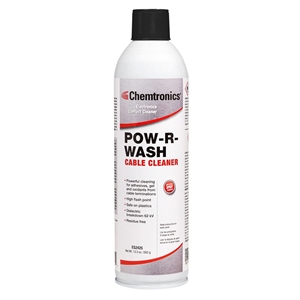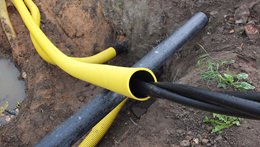Pow-R-Wash Cable Cleaner
Extra-strength, plastic safe cable and contact cleaner with moderate evaporation time
Pow-R-Wash™ Cable Cleaner is a high flash point cleaner that quickly removes soils, adhesives, and residues from insulation jackets and conductors on telecom, fiber optic and coaxial cables. Excellent wetting action lifts and removes soils from the tightest tolerance areas. Pow-R-Wash™ Cable Cleaner is also ideal for removing carbonization, oxidized oils and greases from contacts.
Features & Benefits
- Extra cleaning strength; cleans encrusted hard-to-remove soils
- Safe on plastics
- Dielectric Breakdown 62 kV
- High flash point
- Leaves no residue
Applications
- Removes dirt, adhesives, gel and oxidants from cable terminations
- Removes oils and grease from equipment and tools, generators, compressors, and mechanical tools of all types
- Great for use on metal contacts, potentiometers and fuse blocks
| TDS | |
| REGS | |
| SDS | |
| Categories |
| Shelf Life | 5 yrs. |
|---|---|
| Shipping Name | Consumer Commodity ORM-D |


